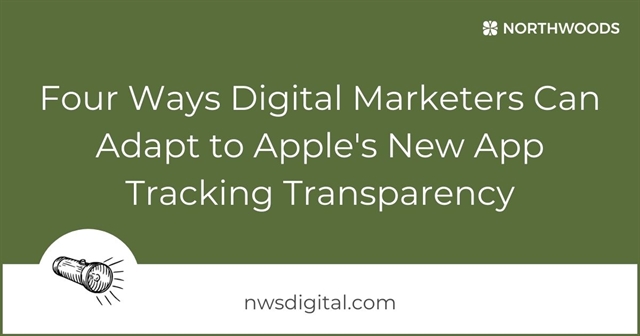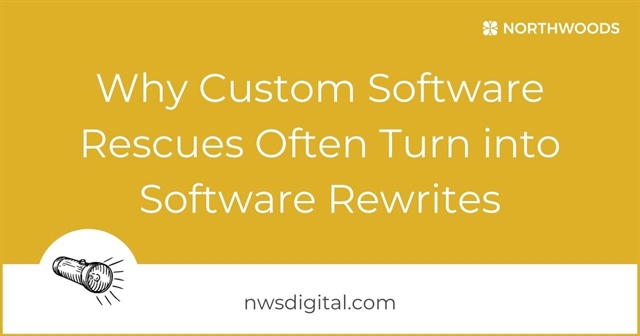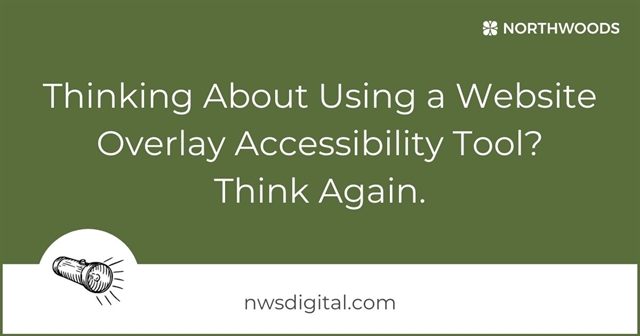By Northwoods Team
June 17, 2021
4 Minute Read
We’ve all heard of MarTech, a newer term making the rounds of marketers and developers. Could this be just one more fad tech term? Or is MarTech a real, useful thing?
MarTech can provide you with more powerful data, and that data can guide you to improved interactions with your users. MarTech is here to stay.
What Is MarTech?
MarTech is an umbrella term for tools and services that (1) collect, (2) analyze and (3) present data, and thus help digital marketers make better, data-driven decisions. MarTech helps you better understand the journeys of your prospects and customers. Its tools help you test different campaigns, monitor engagement, automate communications and, ultimately, tweak it all to improve your marketing performance.
Google Analytics (GA), a common MarTech tool (you are using GA, right?), checks the three boxes:
- It collects useful and relevant data about your users as they visit your site.
- It analyzes the data to find meaningful insights.
- It presents those insights to you, the digital marketer, in a clear and understandable way.
GA gives you information that helps to boost conversions, improve customer communications, and get the most out of your budget.
What Is a MarTech Stack?
GA should not be the only tool on your MarTech tool belt. Google Tag Manager (GTM) collects and pushes additional data; Crazy Egg and other heat-mapping tools show how users interact with your site; services such as Optimizely test to see which of your changes are actual improvements.
And that’s just the beginning of an array of MarTech tools. Among the more common ones:
- Marketing automation tools (SharpSpring, Marketo, etc.)
- Email marketing services (MailChimp, for example)
- SEO platforms (Semrush, for example)
- Ad platforms (Google, Facebook, etc.)
- CRMs (Salesforce, HubSpot, etc.)
You may be tapping into other systems within your organization, as well, that aren’t specifically geared to marketers. For instance, you may have an ecommerce site that's powered by a PIM (Product Information Management) or ERP (Enterprise Resource Planning) system.
Taken together, the different platforms and services that power your marketing efforts form your MarTech stack.
What's an Integrated MarTech Stack?
No single tool brings total clarity and insight to the full range of your marketing efforts. That’s why you need to get your cutting-edge MarTech tools to talk to one another to give you a more complete picture.
More and more marketing teams are integrating MarTech tools into stacks. Ideally, data and analyses flow freely among tools layered within these stacks. Individual MarTech tools collect, analyze and present data. An integrated MarTech stack does those same three things across its various component tools.
Most collection/analysis tools have an Application Programming Interface (API) for moving data around. An API allows transfer of data from one software or code to another software or code. But it's only machine readable – no user interface goes with an API. (We developers enjoy complication; APIs are also known as web services, web methods, RESTful services, and endpoints.)
If all the tools in your MarTech stack have APIs, in theory they could all converse. In practice, you might get two tools to talk together. But coaxing a dozen different services to work in harmony? Quite a challenge.
Three Basic Ways to Integrate Your MarTech Stack
Integration
Some MarTech tools natively support others. For instance, your CMS might have some built-in integration with GTM or GA. Your marketing automation platform might have built-in connectors for Salesforce or your CRM. Take advantage of such built-ins; sometimes it’s as easy as toggling a checkbox in the settings for a tool or simply providing some credentials for one system to another system.
Integration/Automation
A whole industry about tying together different platforms has emerged in recent years. Many industry efforts aim specifically at MarTech tools. Terms such as “workflow automation” and “enterprise data orchestration” have attached to such big players in this field as Zapier, LeadsBridge, Integromat and Automate.io.
Their tools provide connectors to dozens, even hundreds, of different platforms. They give you a simple, clean interface for building out workflows that move data among systems. A workflow usually starts with some sort of trigger and then runs a series of tasks. A website visitor submitting a contact form, for instance, could trigger the system to run a series of tasks: forwarding an email to the appropriate member of the sales team; adding the user as a prospect to the CRM; starting the user on a drip email marketing campaign, and so on.
Custom Integration/Automation Hub
Workflow automation platforms can be powerful, but they have their drawbacks.
First, many platform providers charge based on volume. If you run thousands or even millions of workflows daily, cost can run away quickly.
Second, providers of these systems prioritize connecting large platforms. Almost all connect to Salesforce and Google Analytics, but might not connect to some of your tools. If your MarTech stack includes tools that target a niche industry (e.g., an ERP for a certain type of manufacturer), or any custom applications developed internally, you likely won’t be able to connect them.
A custom integration hub could be a good option. To create one, you work with a development team to build a solution that can connect to all of your tools, at any volume and with whatever custom business logic you need. This is expensive, but a custom hub gives you the most flexibility.
If you need advice about the best approach to your MarTech stack integration, or want to discuss how a custom solution could meet your needs, our expert software development team can help! Contact us today.
Related Blog Posts

While Apple’s release of iOS 14.6 comforts users concerned about their online privacy, it’s also triggering headaches for marketers accustomed to leveraging user data to target ads and messaging. Here are four ways digital marketers can adapt.

Starting over with a custom software rewrite seems like a non-starter. But the instinct that resists starting over tends to conflict with the effects of age on software. Here's why custom software rescues often turn into software rewrites, what to expect from a consultation, and a helpful self-assessment to identify potential areas of concern.

Many accessibility tools and products on the market “bolt on” to your website as third-party scripts or plugins. They claim to make websites more accessible to end users and/or protect site owners from accessibility lawsuits. Sounds like a great, easy solution, right? Here's what you need to know.